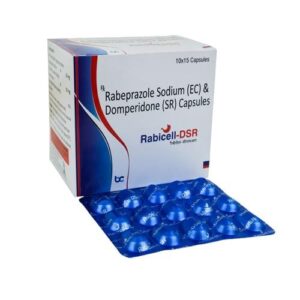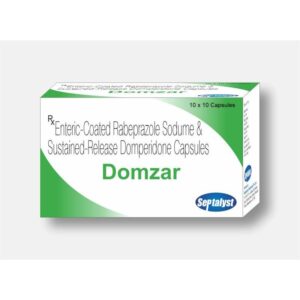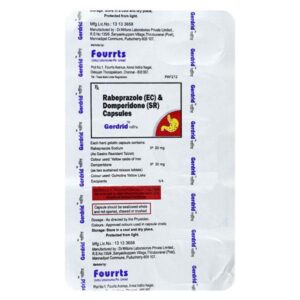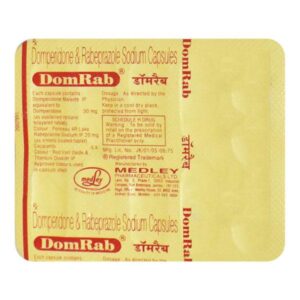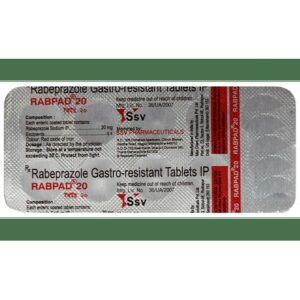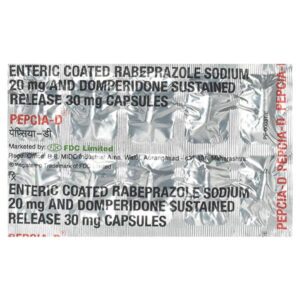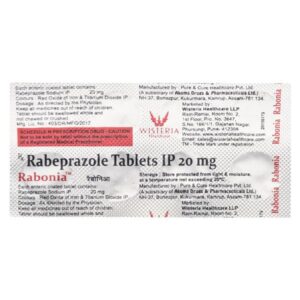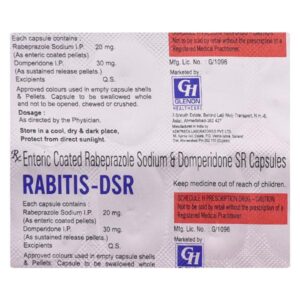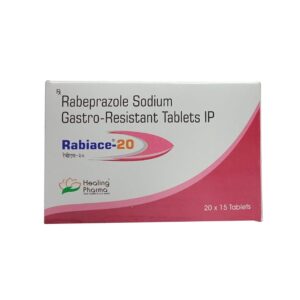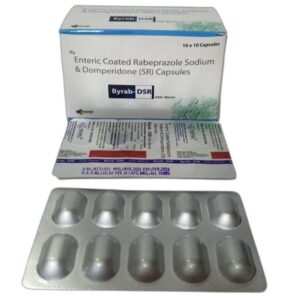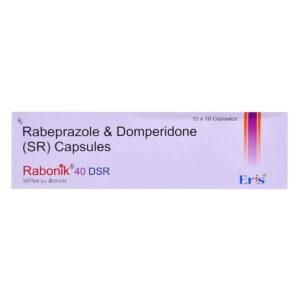RABEPRAZOLE + DOMPERIDONE
Rabeprazole: Rabeprazole is a medication classified as a proton pump inhibitor (PPI). It is primarily used to treat conditions related to excessive stomach acid production, such as gastroesophageal reflux disease (GERD), gastric ulcers, and Zollinger-Ellison syndrome.
The mechanism of action of rabeprazole involves the inhibition of the proton pump enzyme in the stomach lining called H+/K+ ATPase. This enzyme is responsible for secreting acid into the stomach, so by inhibiting it, rabeprazole reduces the amount of acid produced, thereby relieving symptoms associated with acid-related conditions.
The usual recommended dose of rabeprazole for most conditions is 20 mg once daily, taken before a meal. However, the dosing regimen may vary depending on the specific condition being treated, so it is important to follow the instructions provided by a healthcare professional.
As with any medication, rabeprazole may cause some side effects. Common side effects include headache, diarrhea, nausea, abdominal pain, and flatulence. These side effects are generally mild and temporary. Rare but serious side effects may include severe allergic reactions, kidney problems, and an increased risk of bone fractures. It is important to seek medical attention if any severe or unusual side effects occur.
Rabeprazole may interact with certain medications, such as some antibiotics and anticoagulants, so it is important to inform healthcare professionals about all medications being taken to avoid potential drug interactions.
It is worth noting that rabeprazole is a prescription medication, and it should only be used under the supervision of a healthcare professional who can assess its appropriateness and monitor its effects.
Domperidone: Domperidone is a medication used to treat symptoms of nausea and vomiting, as well as disorders of the digestive system. It belongs to a class of drugs known as dopamine receptor antagonists, specifically the D2 receptor antagonist.
The primary use of Domperidone is to relieve symptoms such as nausea, vomiting, bloating, and feelings of fullness that occur due to various conditions like gastroparesis (a condition that causes delayed emptying of the stomach), gastroesophageal reflux disease (GERD), and chemotherapy-induced nausea and vomiting. It is also used to increase milk production in breastfeeding mothers.
The mechanism of action of Domperidone involves blocking the dopamine receptors in the stomach and upper intestine. By doing so, it enhances gastric emptying and reduces feelings of nausea and vomiting. Additionally, it can stimulate prolactin release, promoting milk production.
The usual recommended oral dose of Domperidone is 10-20 mg taken before meals and at bedtime. The duration of treatment varies depending on the condition being treated and the response to the medication. It is important to follow the prescribed dose and duration given by the healthcare provider.
Like any medication, Domperidone can have side effects. The most common side effects include headache, dizziness, dry mouth, stomach cramps, diarrhea, and increased levels of prolactin. In rare cases, it may cause serious cardiovascular events like irregular heartbeat or sudden cardiac arrest, particularly in individuals with underlying cardiac conditions. Patients should be monitored for any signs of cardiac issues and immediately report any unusual symptoms to their healthcare provider.
As with any medication, it is essential to consult with a healthcare professional before starting Domperidone to ensure its safe and appropriate use, especially if the patient has any pre-existing medical conditions or is taking other medications that may interact with it.



